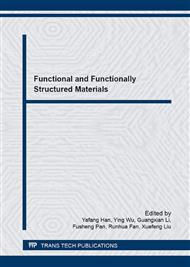p.580
p.588
p.593
p.607
p.613
p.618
p.624
p.633
p.645
Study on High Pressure Sintering of Nanocrystalline Diamond with Nano Silicon as Additives
Abstract:
In this paper, nanocrystalline diamond with the average grain size of 50nm was prepared under different sintering pressure, temperature and sintering time. The microstructure of the sample was analyzed by SEM, EDS and XRD, and the mechanical properties tested by micro-hardness tester and wear ratio instrument. The results show that the sample sintered under the optimum conditions of oil pressure 87MPa, heating power 4000W and sintering time 120s possessed hardness of 706.41HV and wear ratio of 3280. It indicated that high performance n-PCD sintered from nanodiamond and silicon system can be formed hardly with diamond to diamond bonding but can be formed with diamond to silicon carbide bonding. The poor mechanical properties of the samples were due to the surface adsorption groups and surface graphitization of nanodiamond during high pressure sintering.
Info:
Periodical:
Pages:
613-617
Citation:
Online since:
March 2016
Authors:
Price:
Сopyright:
© 2016 Trans Tech Publications Ltd. All Rights Reserved
Share:
Citation:


